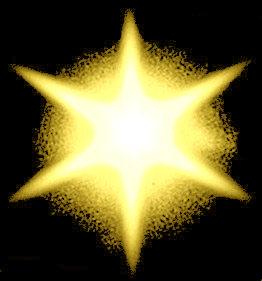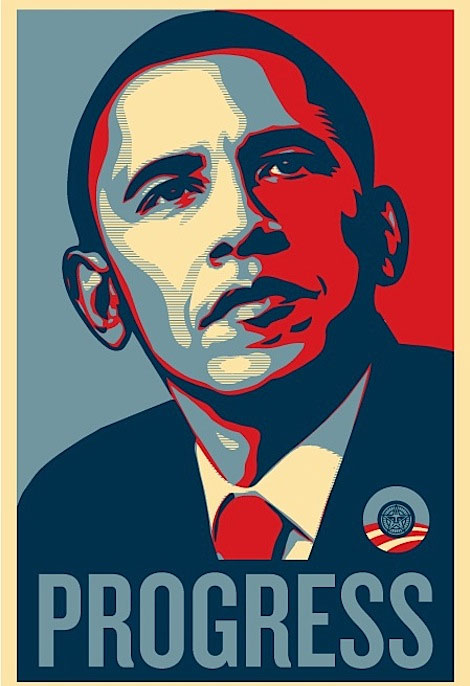
Craig White's Literature Courses
Terms & Themes
Symbol
Symbols are one of the most persistently meaningful devices in literature, other media, and culture.
Symbols are always at work every day in human minds and environments. Recent social analysts divide modern humans into two categories:
-
those who manipulate symbols (e.g., computer programmers, writers of all kinds, visual and other artists, advertisers, marketers, political consultants), and
-
those who are manipulated by symbols (passive consumers of TV, music, advertising, popular art and culture generally, celebrity worship, etc.).
So symbols are important, even essential to human existence and functioning, but they're not simple but as complex as human society. Much of their power rises from their adaptability and variability in appealing to different people with different meanings, even as symbols appear to be the same.
The challenge of symbols for literature classes is that symbols can mean many things, but not necessarily any old thing we feel like. The solution is that symbols always mean something as part of a context or code--that is, symbols don't signify independently of other symbols but operate in a network of other symbols. For instance, the symbol "green" means "go" as long as "red" means "stop."
The other challenge for symbols in literature classes is that students perceive symbols as having "hidden meaning." Such "hidden meanings" are often suggested by teachers offering interpretations of a symbol within a code that students don't comprehend or don't want to--for instance, the central symbol of Nathaniel Hawthorne's The Scarlet Letter (the letter A) may mean Adultery, Angel, Able, or other A-words depending on who's perceiving the A and in what context. But these meanings aren't really "hidden"--they're just operating in different codes or contexts that students may not share or be interested in.
But just because students don't get symbols doesn't mean they're not working on us one way or another . . . . They are, they do, they never stop, we can't help it. Right now I'm becoming a symbol of a crazy old professor who can't stop trying to impress you with how important this is whether you care or not . . . .
![]()
A further frontier in symbols: People live by stories or narratives, but what are stories made of? The standard answer is that stories are a meaningful sequence of actions or events, but some theorists describe the events or steps in a narrative as symbols, each with a necessary function or meaning for moving the story forward.
Quick example: In a Romantic comedy, a potential couple runs into a former boyfriend or girlfriend. What does the former boyfriend or girlfriend symbolize, and how does that symbolic meaning change or affect the direction of the story?
![]()
Simplest equation: symbol = image + meaning
image = something that communicates to the senses; most often sight--image aspect of a symbol is part of nature
meaning . . .
a symbol suggests or provokes meaning, often powerfully but not absolutely and definitely (though some readers of the symbol may feel absolute or definite about the meaning)
standard examples:
| American flag How does its meaning change in different environments? |
 |
|
Virgin of Guadalupe
Mexico independence maternity submission women's empowerment
|
 |
|
fire destruction cleansing warmth pain aspiration (Olympic Torch, Statue of Liberty) |
 |
|
water cleansing destruction rebirth baptism sex (getting wet in movies) |
 |
|
Star remoteness aspiration guidance (North Star, nagivation) coldness beauty, perfection dawn, new day night |
   |
popular celebrities or politicians
|
|
 |
 |
 |
Symbols can't mean anything and everything, but they don't mean just one thing
this multiplying or shifting quality keeps symbols alive and meaningful--in evolutionary terms, symbols are adaptable
![]()
All the symbols above are more or less public or universal symbols, but symbols can also be personal or private. For instance, a parent, teacher, or other figure in your own past can symbolize any number of qualities in your life-story: a good role model, a helper, repression, a light . . . .
![]()
Contexts or "frames" of meaning > symbols in narratives
images interact with their contexts or with other images to generate symbolic meaning
example: colors
For traffic signals, green = go b/c red = stop
In refrigerator meat compartments, green = stop
or Christmas: "hanging the greens" or evergreens as symbol of new birth (also starlight vs. darkness)
Green is the primary color associated with Islam, presumably because of association with nature
Point: the same image changes meaning according to context or other symbols (though symbol usually remains faithful to original nature--e.g., green is rarely hot, as red would be.)
Example: "the color code" in race identity traditionally relies on associations of white or light with divinity or darkness with sin, evil, the unknown.
But one's own perspective could change the context
Or colors may take on different meanings
light = pallor, sickness, death, ghosts
darkness = fertility, night, rest, richness
from
LITR 4632 Literature of the Future
Revelation, chapter 13
1: And I stood upon the sand of the sea,
and saw a beast rise up out of the sea, having seven heads and ten horns, and
upon his horns ten crowns, and upon his heads the name of blasphemy.
2:
And the beast which I saw was like unto a leopard, and his feet were as the
feet of a bear, and his mouth as the mouth of a lion: and the dragon gave
him his power, and his seat, and great authority. . . .
7: And it was given
unto him to make war with the saints, and to overcome them: and power was given
him over all kindreds, and tongues, and nations.
8: And all that dwell upon
the earth shall worship him, whose names are not written in the book of life of
the Lamb slain from the foundation of the world. . . .
11: And I beheld
another beast coming up out of the earth; and he had two horns like a lamb, and
he spake as a dragon.
12: And he exerciseth all the power of the first beast
before him, and causeth the earth and them which dwell therein to worship the
first beast, whose deadly wound was healed.
13: And he doeth great wonders,
so that he maketh fire come down from heaven on the earth in the sight of men,
14: And deceiveth them that dwell on the earth by the means of those
miracles which he had power to do in the sight of the beast; saying to them that
dwell on the earth, that they should make an image to the beast, which had the
wound by a sword, and did live.
15: And he had power to
give life unto
the image of the beast, that the image of the beast should both speak, and
cause that as many as would not worship the image of the beast should be killed.
16: And he causeth all, both small and great, rich and poor, free and
bond, to receive a mark in their right hand, or in their foreheads:
17: And
that no man might buy or sell, save he that had the mark, or the name of the
beast, or the number of his name.
18: Here is wisdom. Let him that hath
understanding count the number of the beast: for it is the number of a man;
and his number is Six hundred threescore and six. [666]
for early Christians, "The Beast" or Antichrist = Roman Emperor Nero
for early (and some later) Protestants, Beast / Antichrist = the Pope
King George in American Revolution
Napoleon
Hitler
Saddam Hussein
Osama bin Laden
"Babylon" = Rome, Jerusalem, America (for Rastafarians)
possible conclusion:
Revelation may be "future is written," but its readers continue to re-interpret new futures in terms of Revelation. This can partly account for its perennial popularity--there's always a beast somewhere. If you can raise that beast to "The Beast," then you also raise yourself in religious or historic importance.
Additional notes on symbols:
Thomas Fawcett, The Symbolic Language of Religion. Minneapolis MI: Augsberg, 1971.
Chapter 2
28 [Symbols] have what Josiah Royce calls “surplus meaning,” . . . .
28 A symbol is able to refer to a variety of things at different times and places.
Ambiguity of water: healthfulness of cleansing; destructiveness of flood
28 E. Cassirer: “a genuine human symbol is characterized not by its uniformity but by its versatility.” [An Essay on Man, Yale UP, 1958, 132]
29 The “multiplicity of signification” is bounded by “the natural qualities of the symbol.” [J. Danielou, The Lord of History, Longmans Green, 1958, 132]
example of American flag
Symbol must first of all be an image, something that can be seen or otherwise sensed.
cultural example: A flag is a piece of colored cloth.
literary example: the "Scarlet Letter" in Hawthorne's novel is an embroidered piece of fabric; the "North Star" in Frederick Douglass's slave narrative is an actual star (Polaris) in the night sky
But an image becomes a symbol by accessing or providing meaning(s) beyond the mere fact of the image.
These meanings are provided by cultural contexts, such as stories or experiences through which the image is interpreted
cultural example: The flag stands for patriotism, military honor, the American Dream; or, in Iran or North Korea, for imperialism, spying, exploitation.
literary example: Hawthorne's "Scarlet Letter" stands for "Adultery" (or later "Able" or "Angel"). For Douglass the North Star stands for freedom, hope, the ideal.
Symbols gain much of their power not by meaning one thing but by resisting reduction to a single meaning.
cultural example: The flag can mean different things to different people. If it only means one thing, fewer people salute (or jeer).
The various meanings transmitted by symbols become perceptible from different audiences or perspectives.
Bedford Glossary of Critical Terms
symbol: something that, although it is of interest
in its own right, stands for or suggests something larger and more
complex--often an idea or a range of interrelated ideas, attitudes, and
practices.
Within a given culture, some things are understood to be
symbols: the flag of the United States is an obvious example, as are the five
intertwined Olympic rings. More subtle cultural symbols might be the river as a
symbol of time . . . . [W]riters often create their own symbols by setting up a
complex but identifiable web of associations in their works.
A Handbook to Literature
Symbol A symbol is something that is itself and also stands for something else . . . as a flag is a piece of colored cloth that stands for a country. All language is symbolic in this sense . . . .
All-American Glossary of Literary Terms (research links)
symbol (sim-bol): a symbol is a word or object that
stands for another word or object. . . . For example a dove stands for Peace.
The dove can be seen and peace cannot. . . .
Virtual Salt Glossary of Literary Terms
Symbol. Something that on the surface is its literal self but which also has another meaning or even several meanings. For example, a sword may be a sword and also symbolize justice. A symbol may be said to embody an idea. There are two general types of symbols: universal symbols that embody universally recognizable meanings wherever used, such as light to symbolize knowledge, a skull to symbolize death, etc., and constructed symbols that are given symbolic meaning by the way an author uses them in a literary work, as the white whale becomes a symbol of evil in Moby Dick.
symbol (sim-bol): a symbol is a word or object that
stands for another word or object. The object or word can be seen with the eye
or not visible. For example a dove stands for Peace. The dove can be seen and
peace cannot. The word is from the Greek word symbolom. All language is
symbolizing one thing or another. However when we read the book of Genesis it
talked about a few symbols. In the story of Adam and Eve when Eve ate the apple,
the apple stood for sin. Another reading Cain and Able. The two brothers stood
for good and evil, humility and pride. Cain pulled Able to the fields and killed
him. In this it is a hidden symbol. It is showing that Cain stands for the bad
and Able stands for the good. See The Encyclopedia of Literature and
A
Handbook to Literature.
Misty Tarlton, Student, University of North
Carolina at Pembroke
*****
Symbol is using an object or action that means something more than its literal meaning.
*The practice of representing things by means of symbols
or of attributing symbolic meanings or significance to objects, events, or
relationships.
*A system of symbols or representations.
*A symbolic meaning or representation.
Example:
the bird of night (owl is a symbol of death)
(http://www.tnellen.com/cybereng/lit_terms/)
- SYMBOL
- An image transferred by something that stands for or
represents something else, like flag for
country, or
autumn
for maturity. Symbols can transfer the
ideas embodied in the
image without stating them, as in Robert Frost's "Acquainted With the
Night," in which night is symbolic of
death or depression,
or Sara Teasdale's "The Long Hill," in which the climb up the hill
symbolizes life and the brambles are symbolic of life's adversities.
Sidelight: Symbols can be subject to a diversity of connotations, so both the poet and the reader must exercise sensible discretion to avoid misinterpretation.
- CONNOTATION
- The suggestion of a meaning by a word beyond what it explicitly denotes or describes. The word, home, for example, means the place where one lives, but by connotation, also suggests security, family, love and comfort.
(Glossary of Poetic Terms, http://www.poeticbyway.com/glossary.html)
Symbol. Something that on the surface is its literal self but which also has another meaning or even several meanings. For example, a sword may be a sword and also symbolize justice. A symbol may be said to embody an idea. There are two general types of symbols: universal symbols that embody universally recognizable meanings wherever used, such as light to symbolize knowledge, a skull to symbolize death, etc., and constructed symbols that are given symbolic meaning by the way an author uses them in a literary work, as the white whale becomes a symbol of evil in Moby Dick. (Virtual Salt Glossary of Literary Terms)
T-shirt with image of Guadalupe
arguing the fish sign (I'm not sure what the tone of this article is, but it seems to suspect that the symbol is tainted by pagan associations)
